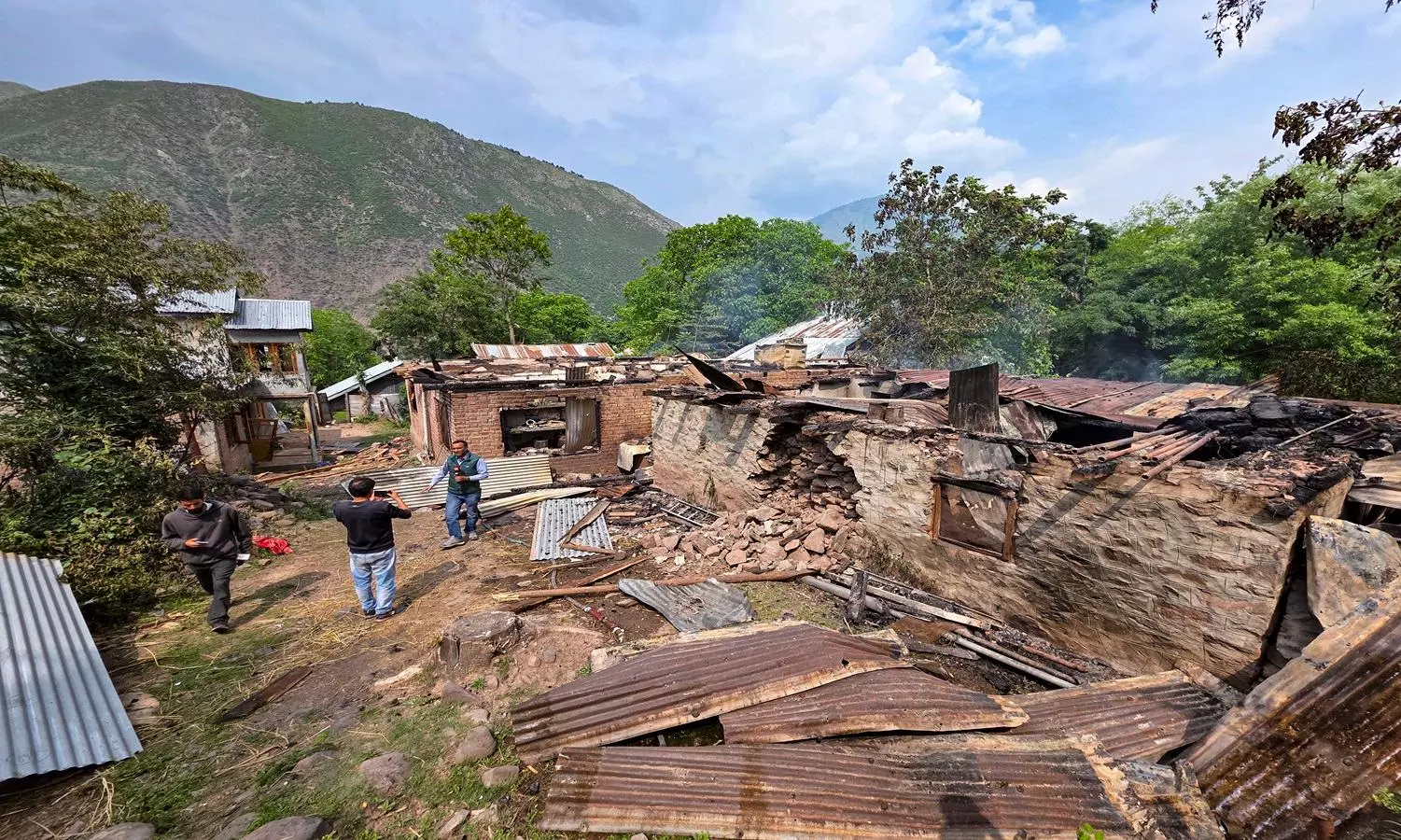AA Edit | As India Strikes Pak Terror, Be Ready to Face Escalation
Airstrikes target JeM and LeT camps; India warns of full readiness amid threat of escalation

India is at war against Pakistan-based terror. The country took its operations against sponsored terror up several notches by striking out at the infrastructure of groups like Lashkar-e-Tayyaba and Jaish-e-Mohammad at nine sites in PoK and in the Pakistani heartland of Punjab in places like Bahawalpur that housed the HQ of the notorious JeM, led by Masood Azhar.
Operation Sindoor, as it was emotionally titled in response to the Pahalgam terror attack in which 26 civilians lost their lives, was of a different calibre altogether. Earlier surgical-strike responses to terror attacks in Kashmir in 2016 and 2019 were limited actions in PoK.
India’s military operation in the early hours of May 7 is symbolic of the highest capabilities of the combined forces in carrying out targeted strikes.
The act of coordinated strikes named Operation Sindoor was “measured, non-escalatory and proportionate”, according to the official statement of the foreign secretary. And yet, even a diehard optimist will not imagine that this will follow the pattern of previous strikes of non-escalatory tit-for-tat military manoeuvres since there is every likelihood of Pakistan responding with force.
To be prepared for any eventuality is India’s lot now, even if its expansive action was precise with the employment of high-accuracy standoff weapons expertly guided to ensure the least possible collateral damage at nine locations, four in the Punjab and five in PoK. At least half a dozen civilian deaths were reported while the number of terrorists eliminated may have been, according to reports, 10 times higher.
Even so, Pakistan’s immediate response at dawn on Wednesday was to pepper Kashmir with more of the indiscriminate artillery shelling of the last several days since the diplomatic standoff saw many restrictive measures introduced by both countries. More than nine may have been killed in the shelling and several more injured in villages along the LOC and the International Border.
Considering the loss of lives of innocent villagers, the stark truth is India is also at war now with Pakistan. The neighbour may have been playing games in making sure the count was 26 in India’s Operation Sindoor, that equates it with the Pahalgam deaths. But it was not the number so much as the religious discrimination and the manner of hits at innocent tourists in Kashmir that so incensed India to retaliate as it did.
The approbation from a population of 140 crore people, who will see Operation Sindoor as not just revenge but a lesson with a message that Pakistan cannot afford to ignore, is to be savoured by the nation.
The strategically well-thought-out military strike has elicited praise while the briefing by the spokespersons chosen from the armed forces in two women officers was well-directed and free of clutter.
This might, however, mean that the nation must be prepared for anything that a religiously indoctrinated general leading the Pakistan army might see as his “proportionate” response to the strike deep inside Pakistan territory as in Bahawalpur, that is 100 km from the border even as the Shehbaz Sharif government is itching for retaliation.
The strangest part is Pakistan’s denials of complicity in the Pahalgam attack have been feeble even as the Western world accepted India’s charge of a direct Pakistan hand in guiding the terror attacks on Kashmir, including through Pakistani nationals handled from there.
It should have come as no surprise that China has been one of the few nations to stand behind Pakistan. If anyone can dissuade Pakistan from this path of directing terror at Kashmir as well as de-escalate at this point of extreme tensions post-Pahalgam attack and the Operation Sindoori response, it is the Chinese leadership. Truth to tell, both nations have only lost in the several wars fought since 1947.
